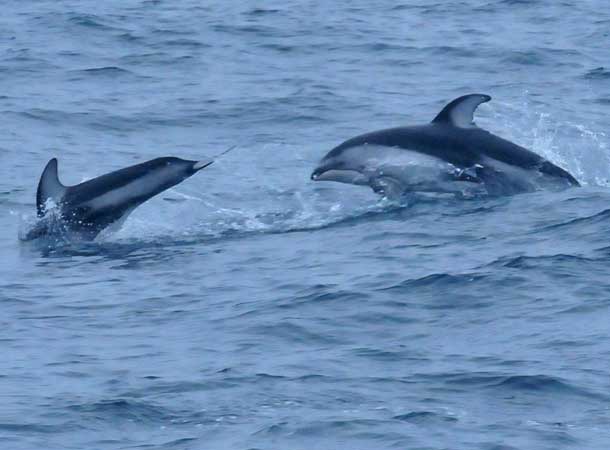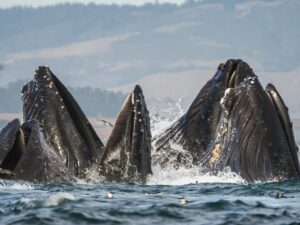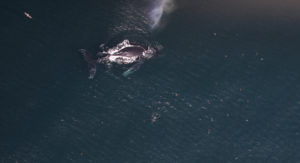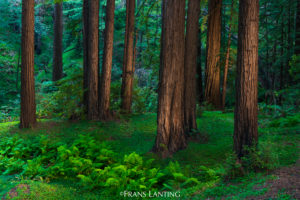Early in the morning, with the fog forming a thick blanket over Monterey Bay, the fisherman’s wharf is abuzz with activity. Tourists and locals alike crowd the wharf in hopes of getting a spot on one of the half-dozen boats docked as workers struggle to make sense of long lines and waiting lists. Everyone is here for one thing: whales.
Humpbacks and blues always come this way from the tropics, their breeding grounds, and spend the summer gorging out on krill and plankton to restore their fat layer and stock up for their winter fast. But this year is different: There’s significantly more krill, and significantly more whales than in the last few years.
The cold, windy, rainy winter that made many people in the Bay Area miserable pushed hundreds of millions of krill into a concentrated area that dozens of humpback and blue whales have descended upon and have stayed, their food source remaining consistently replenished. And Monterey has caught whale fever.
Boating companies that have in previous years done one or two whale watching outings have upped their offerings to three boat tours a day, and they still have waiting lists and people clamoring for spots on the tours, anxious to catch a glimpse especially at the elusive and highly endangered blue whale.
This particular whale, the largest animal ever known to have lived, was hunted almost to the point of extinction in the early and mid-20th century. It has since made a slow recovery, with a current estimated worldwide population of over 10,000.

- Humpbacks lunge-feeding at the surface of Monterey Bay. As the term implies, the whales lunge upward through schools of krill or fish, scooping up anything between them and the surface of the water. Photo by Melanie Jones.
In a typical year, they’re reasonably difficult to see on a standard whale-watching expedition, usually only spotted once a week or so. But the extreme abundance of krill in and near the Monterey Bay has made them a staple of this year’s tours, and whale watchers are almost certain to catch a glimpse.
On a recent expedition with Monterey Bay Whale Watch, no fewer than four were spotted, and these otherworldly creatures wowed the crowd, not in the boisterous, almost playful way of the humpbacks, but simply with their size.

- Hundreds of Pacific white-sided dolphins swam around one tour boat, riding the bow wave and jumping in and out of the water before speeding away. Photo by Melanie Jones.
Although you’re usually able to see only part of the back and the blow hole, the whale’s sheer size prompts exclamations at every sighting, followed by a reverent hush after the forceful push of air erupts from the blowhole before the whale submerged again to continue feeding.
“Blue whales eat about 40 million krill a day,” on-board naturalist Kate Spencer said, after we had left the blues to their endless meals.
If you are at all able in the next few weeks to clear some time to head to Monterey to get on a cold, wet boat for five hours, the experience is sure to be worthwhile. Just make sure your camera batteries are charged, your shoes are sturdy, and your jacket is waterproof.

.jpg)




